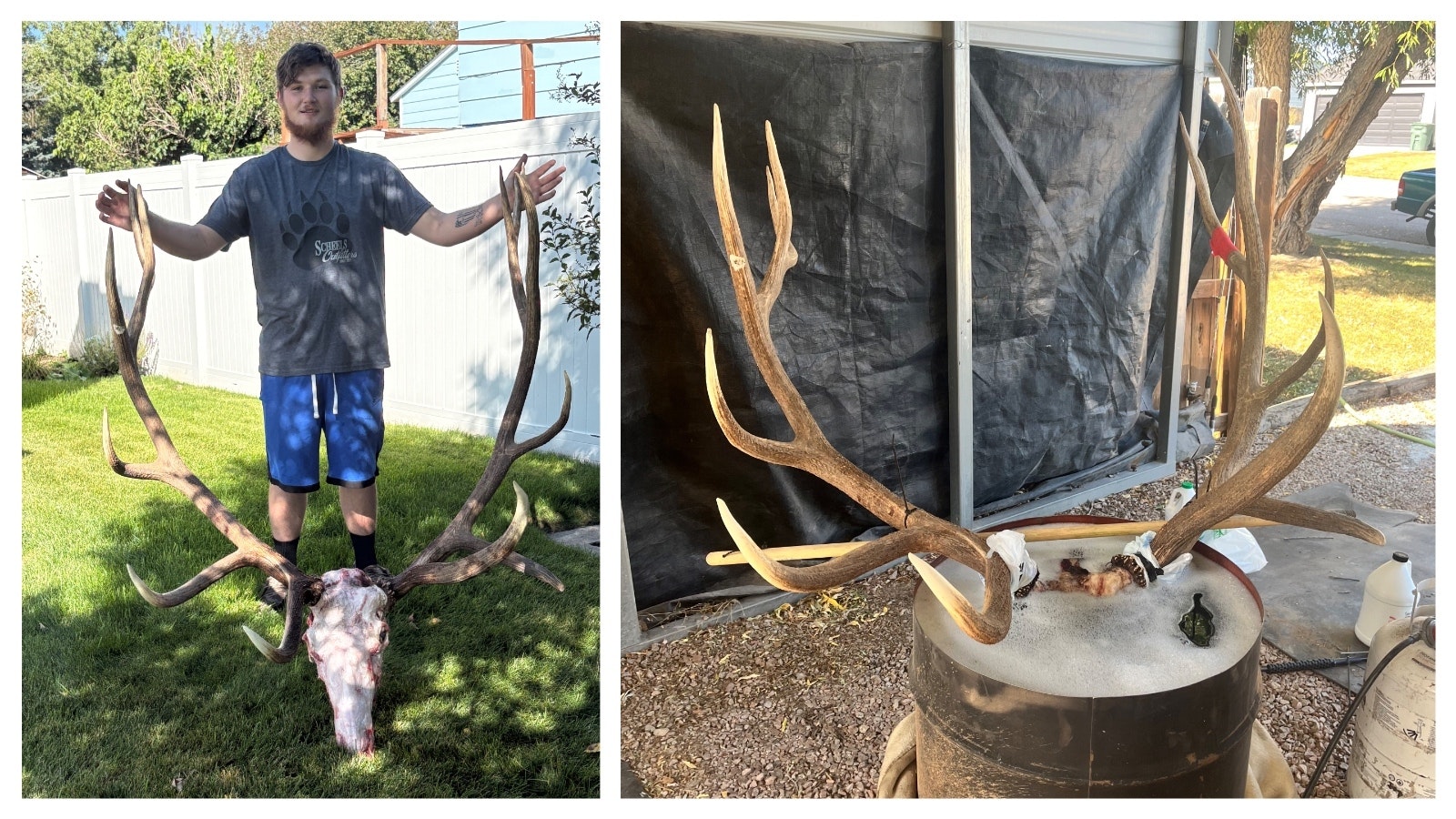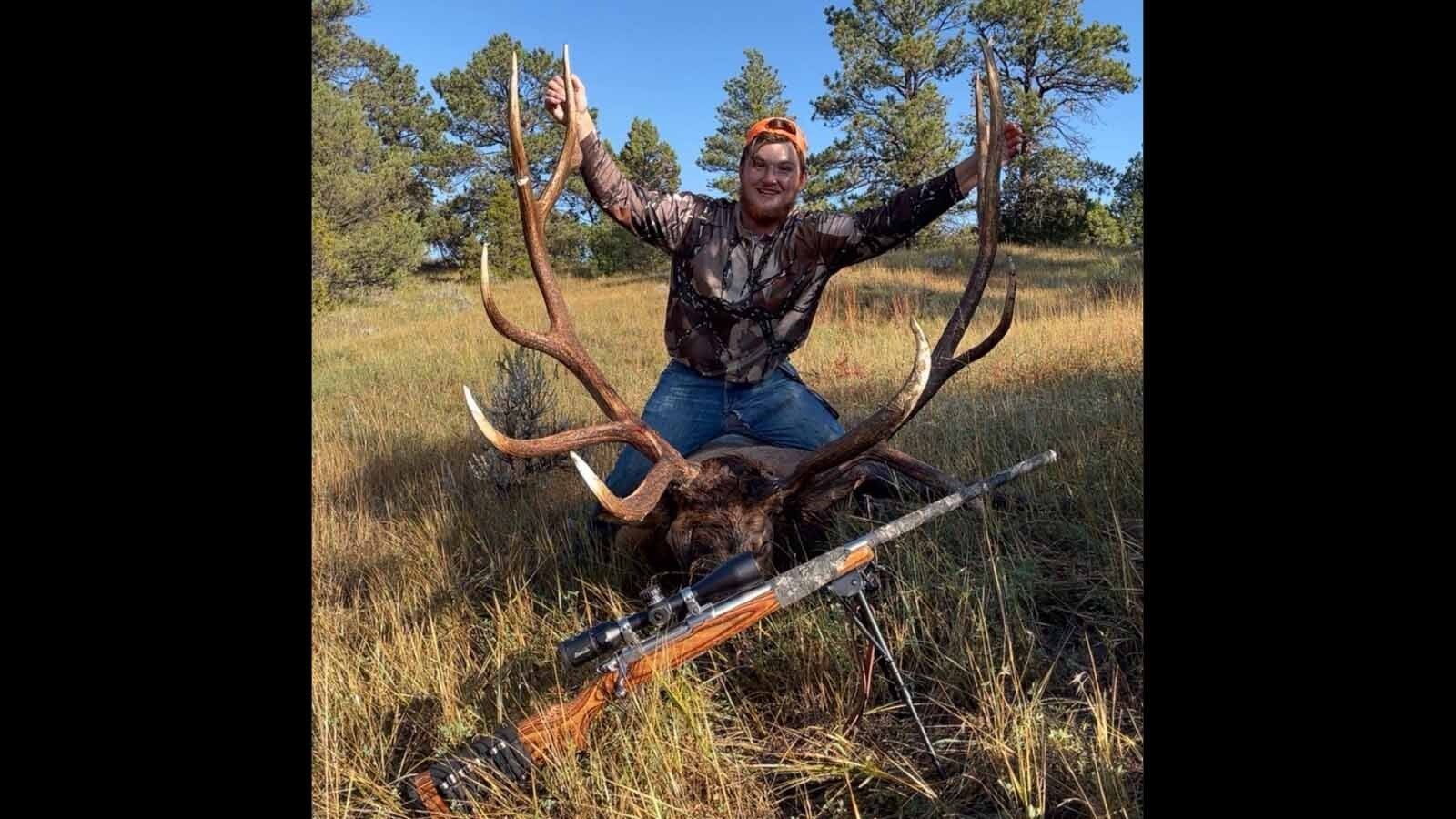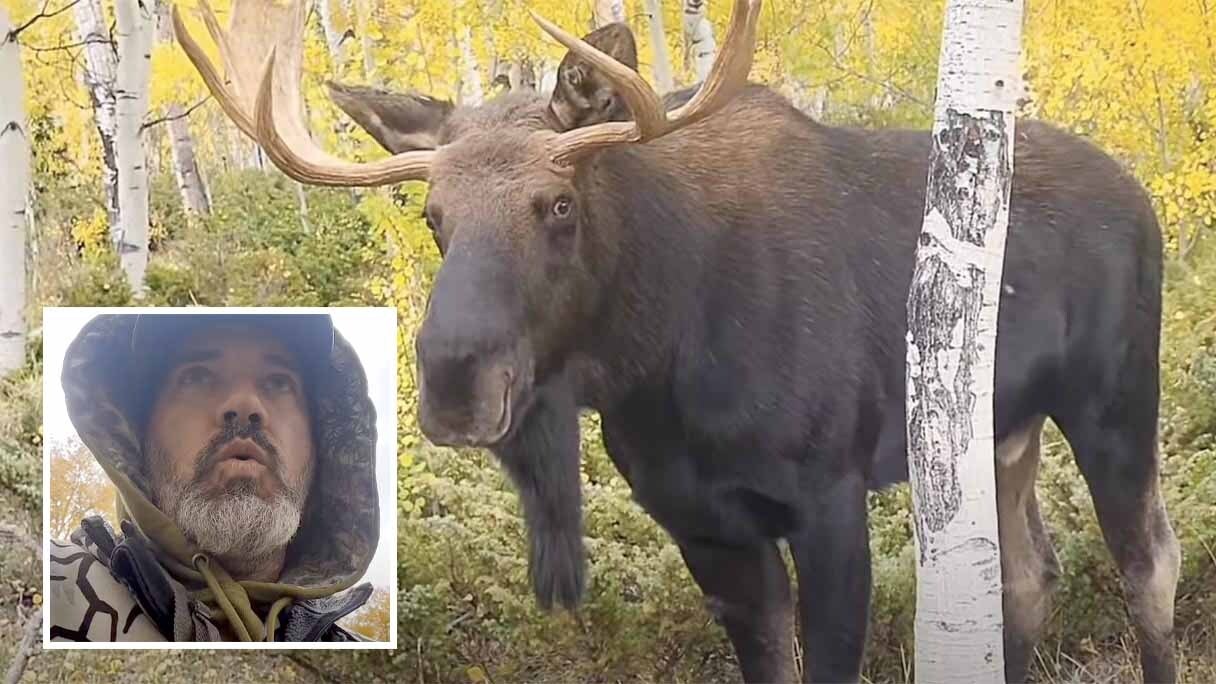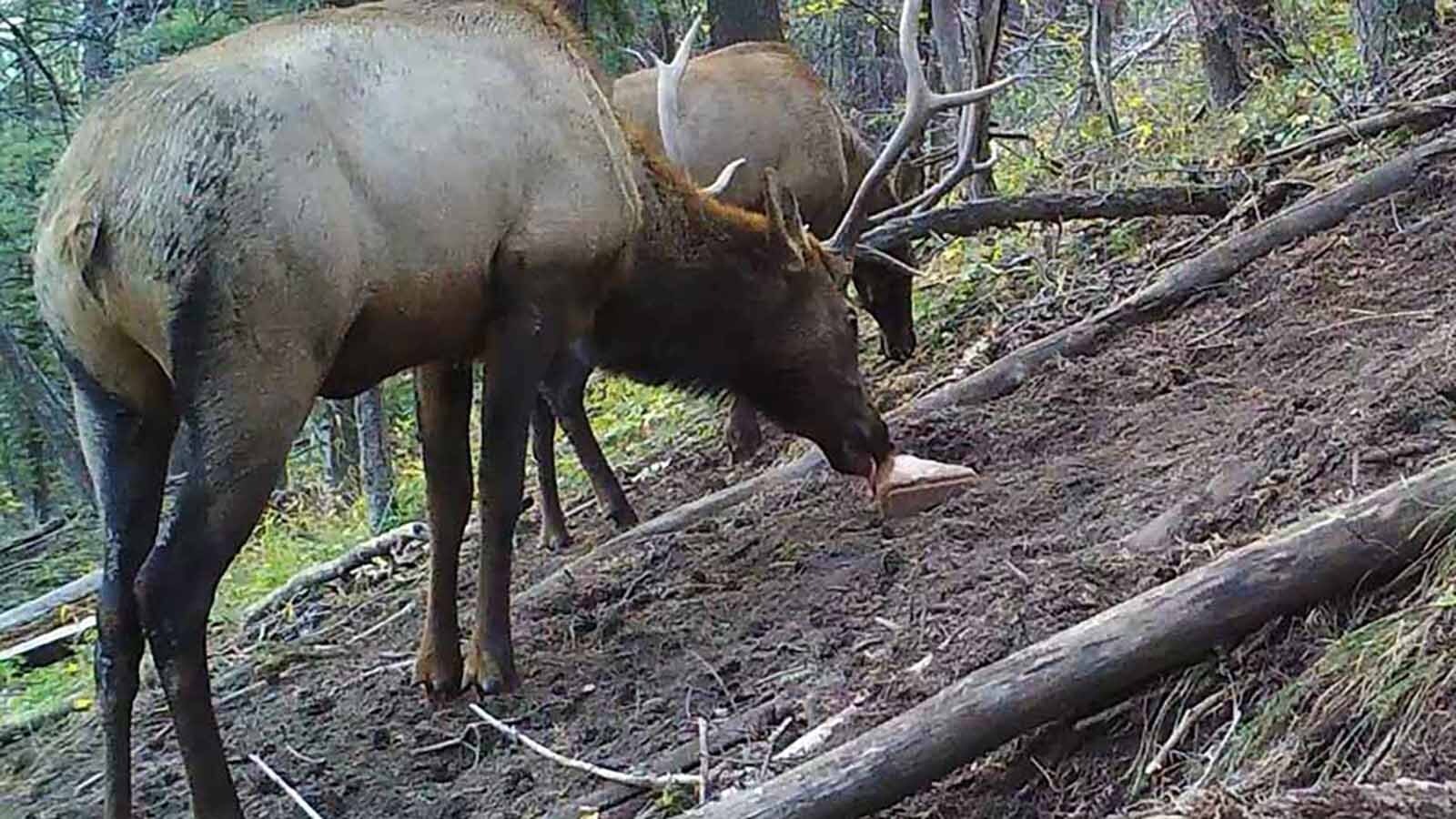After a four-year quest, elk hunter Terrance Monger got what he considers the bull of a lifetime — a behemoth scoring 374 3/8 inches of antlers, shot on public land in Wyoming with a general season hunting tag.
The Gillette man told Cowboy State Daily that from the first moment he saw the bull in northeast Wyoming’s Hunt Area 129 four seasons ago, his mind was set on getting it someday.
It came down to pure tenacity, refusing to give up, he said.
“I knew he was still there. It was just something that I couldn’t let go,” he said.
What’s more, at least one other hunter got a crack at the bull this year before Monger shot it on Sept. 18. There’s a chunk missing from one of the tines (points) on its right antler.
That’s probably from a bullet grazing the antler, Monger said.
“I think somebody took a shot at him from a really long way off,” he said.

First Glance
Elk are plentiful in Wyoming. But getting one can be far from easy. Many herds hang out on private land, where it can be difficult to get permission to hunt.
On public land, the competition from other hunters can be fierce, even in limited-quota draw tag areas.
For limited quota tags, hunters must put in for tags months in advance, and there’s no guarantee of drawing the elk tags they apply for.
In general tag spots, like Area 129 in northeast Wyoming where Monger got the bull, the competition is amped up yet another notch. Tags for those hunt areas are unlimited, and may be bought over-the-counter.
So the odds of finding a trophy-class bull on public land in a general tag area are steep, even astronomical.
And yet, one day four years ago, Monger and his hunting buddy did just that.
Using elk calls to mimic the bugling of rival bulls, they had already drawn in one bull, and Monger shot it, filling his tag.
Then a second bull appeared, a huge one, with a distinctive tilt to his antlers.
Monger’s hunting partner took a shot, but it was a heartbreaking miss, and the bull ran away unscathed.
From that moment on, Monger knew that he couldn’t give up until he got at least a chance at that bull.
‘He’d Go In A Big Circle’
Bull elk on public land in general tag hunting areas don’t get big by being stupid. And as Monger learned over the next couple of hunting seasons, the bull he was questing for was incredibly clever.
The place where he and his buddy hunt is near the Montana state line. It’s a mixture of open country and timber.
And that bull knew how to stick to the timber to avoid being seen.
“Over that four years I only really saw him twice. That first time, and then when I shot him,” Monger said.
But he heard the bull on numerous occasions, and he knew it by its distinct vocalizations.
“He had a really loud grunt. But when he bugled, he would yelp at the end. It was super-high pitched,” he said.
The bull had also mastered the art of circling, to avoid being directly seen.
“He would always circle around to the right,” Monger said.
“He would go out 500 to 600 yards in a big circle, to the right,” he added.
Though the bull was his primary target, Monger would sometimes have to fill his tags with other elk, because the wise old monarch was just too elusive.
“He was super-frustrating,” Monger said.
The Day It Finally Came Together
On Sept. 18, the hunt began like so many others. Monger heard the bull bugling in the distance, with his distinctive “yelp” at the end.
After a while, he figured that hunt would end like so many others had before, and decided to move in on some different elk.
He took a shot at a cow and missed. That was frustrating at first, but it turned out to be a blessing.
He and his hunting partner diligently checked for blood where the cow had been, to make sure she had escaped unharmed.
Then they heard the bull bugling again. Meaning, there still might be an opportunity.
“He was really pissed. He was growling like a bear. I think he was just mad that we were moving on him,” he said.

‘I Thought It Was Just A Dream’
Monger proceeded with caution, but wasn’t really expecting an opportunity. The bull appeared to be up to his old tricks, keeping at a distance in the timber.
Then it happened. Monger spotted the bull through the trees. Moving with incredible speed, the bull had closed the gap to about only 50 yards, without Monger realizing it.
He almost couldn’t believe what was happening.
“When I finally had that chance to look at him, I thought it was just a dream,” he said.
“I probably stood there for three minutes, trying to figure out if it was actually him,” he added.
Once all doubt was gone, Monger waited for just the right moment and took his shot. It was a solid hit and the bull went down instantly.
European Mount
Monger was astounded. Not only were the bull’s antlers even bigger than he’d thought, his body was huge and incredibly healthy.
Bull elk’s bodies generally start to deteriorate after age 10 or so, and Monger knew the bull had to be older.
He gave the bull’s ivories (teeth) to a game warden, for an age check. Sure enough, the warden estimated the bull’s age at 12 to 15 years.
Once he got the bull home, he started the long process of boiling and scraping its skull clean.
He plans to make his own “European mount” of the trophy (a mount including only the animal’s skull and antlers).
“I will get a cape from another elk and eventually have a shoulder mount done of it,” he said.
Meaning, a taxidermist can use the skin from the head, neck and shoulders of another elk to place over a mold – and then use the antlers from Monger’s bull to make a life-like mount.
He said he admires how clever and tough the bull must have been to have lived for so long and stayed so big and healthy while evading not just him, but probably numerous other hunters.
“He was definitely that area’s herd (dominant) bull. He was definitely a fighter,” Monger said.
Mark Heinz can be reached at mark@cowboystatedaily.com.





